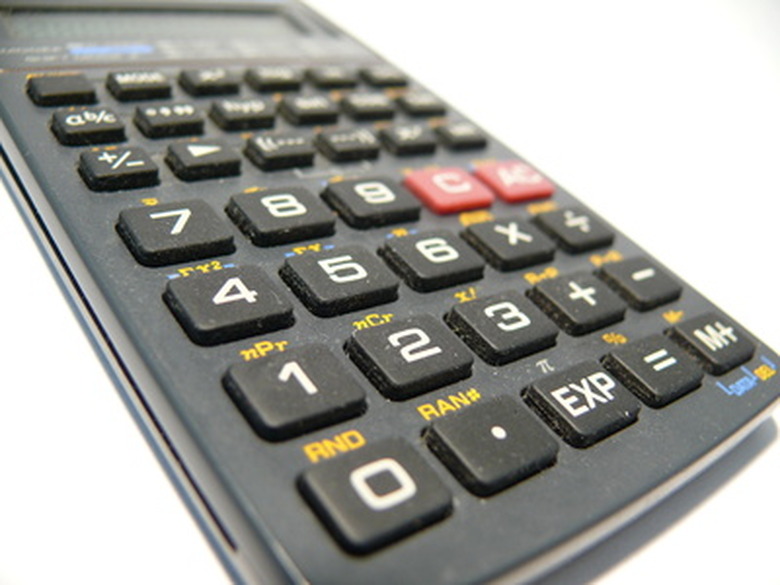How To Work Out Percentages
Percentages are an integral part of everyday life whether you know it or not. Taking part in a survey, going to the bank, measuring ingredients for a recipe or calculating store discounts all require you to work out percentages in some way or another. Calculating a percentage is actually very straightforward and requires only some very basic math.
Step 1
Familiarize yourself with how percentages work. Percentages are proportional representations of whole objects, numbers, prices or people. They are denoted by a "%" symbol and are usually measured between 0% and 100% where 0% represents nothing/nobody and 100% represents everything/everybody.
Step 2
Find out the information you need to calculate a percentage value. You will need two pieces of information: the percentage you are trying to find out and the subject total of what the percentage represents. For example, you might need to find out 90% of 100 grams, 10% of $15.00 or 60% of 250 people.
You will need both pieces of information because percentages are proportional and will give different results depending on what you are finding the percentage of; 48% of 100 people will be different than 48% of 200 people.
Step 3
Work out the percentage's value once you have these pieces of information. This is done using a very straightforward process.
Firstly, you must divide the subject total by 100. This will give you 1% of your subject. For example, if you are working out 10% of 4,500, divide 4,500 by 100 and you will have worked out 1% of 4,500—in this case, 45.
Step 4
Multiply your 1% answer by the percentage you wish to find out. Using the same example, 1% of 4,500 is 45. To find 10% of 4500, simply multiply the 45 by 10 to get 450. This is 10% of 4,500.
Similarly, you can multiply the 1% answer by any number to find any percentage value. For example, to find 80% of 4,500, multiply the 45 by 80 to get 3,600.
Step 5
Learn how to work out the percentage of something if you already have the value. For example, if you want to find out what percentage 2,250 is of 4,500, you can reverse the previous process.
This time, multiply the percentage value by 100 (2,250 x 100 = 225,000). You must then divide this value by the subject total, i.e. 225,000 ÷ 4500 = 50. This is your percentage answer: 2250 is 50% of 4500.
Step 6
Practice these two methods by working out different percentages and values with different subject totals. Vary between working out the percentages for people, weights, times, heights or money.
TL;DR (Too Long; Didn't Read)
Percentages can also be written and calculated as fractions. Visit the Netcomuk.co.uk website for how to work out percentages as fractions (see Resources for a direct link).
Percentages can be written over 100%. This usually happens when you need to find out how much more something has increased. For example, a movie can make a profit of 800% compared to its cost to produce.
References
Cite This Article
MLA
Caines, Matthew. "How To Work Out Percentages" sciencing.com, https://www.sciencing.com/work-out-percentages-7232511/. 24 April 2017.
APA
Caines, Matthew. (2017, April 24). How To Work Out Percentages. sciencing.com. Retrieved from https://www.sciencing.com/work-out-percentages-7232511/
Chicago
Caines, Matthew. How To Work Out Percentages last modified August 30, 2022. https://www.sciencing.com/work-out-percentages-7232511/
